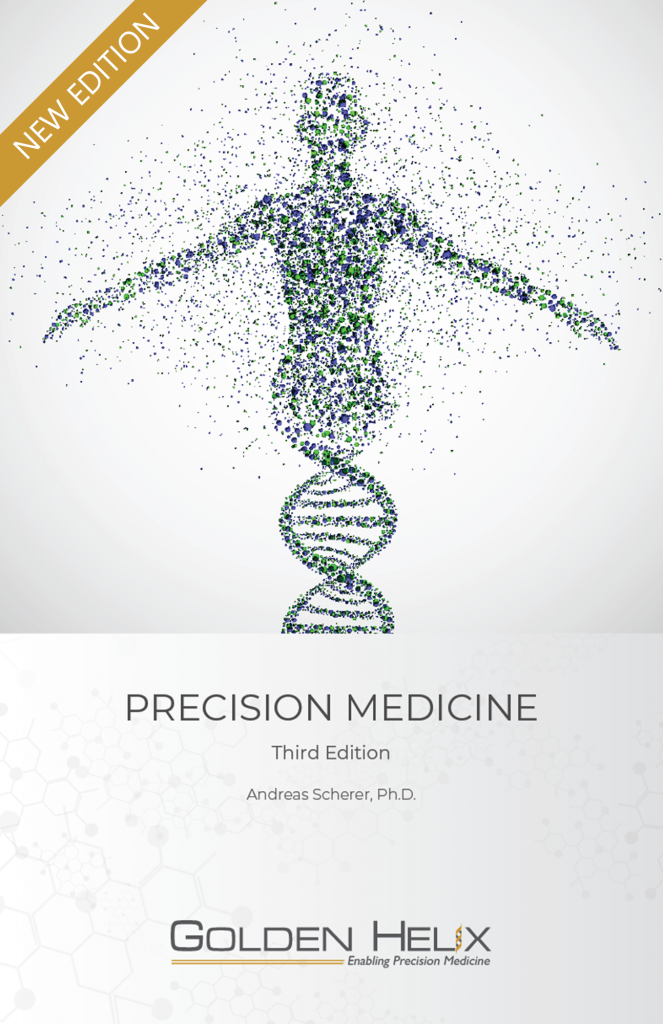Thank you for attending the webinar focused on implementing VarSeq and VSClinical for family-based workflows. If you would like to use the webinar as a reference or were not able to attend, you can access it using the following link to view ‘Family-Based Workflows in VarSeq and VSClinical.
Here is a brief recap of what we discussed:
This webinar demonstrated a trio plus extended pedigree workflow to identify clinically relevant single nucleotide variants (SNVs) and structural variants (CNVs) associated with a specific phenotype. We started by implementing the ACMG Guideline Trio template provided by Golden Helix and discussed details of the filter logic that allowed the identification of variants of different inheritance models. We then demonstrated how users could implement a phenotype-based variant approach, using the PhoRank algorithm. This algorithm identified variants associated with intellectual disability, seizures, and obesity.
We then transitioned into a CNV workflow and discussed the implementation of the ACMG CNV Sample Classifier and Copy Number Probability/Segregation algorithm. The ACMG CNV Sample Classifier provides users with structural variant classifications using the ACMG ClinGen Guidelines, which are documented in this publication. The Copy Number Probability/Segregation algorithm was used to eliminate CNVs that were inherited or shared between samples in the family as well as determine the expected copy number of the event. This was then followed by PhoRank, which lead to a subset of clinically relevant CNVs, which were then passed into VSClinical.
In VSClinical, we covered how evaluations could be created and demonstrated the ease of generating clinical reports. Using VSClinical, we created interpretations for a variant of unknown significance in the USPX9 gene and classified a Pathogenic CNV in the PHF6 gene. These were then rendered into a clinical report to show the simplicity in report modification and generation.
I hope you enjoyed this webinar and will tell others about the solutions provided by Golden Helix. If you would like to access some of our other webinars or blog posts, just click on the associated hyperlinks. Furthermore, here are the answers to the questions that were asked in the webinar:
Q: Could you briefly explain the difference between variant PhoRank and sample PhoRank? The Sample PhoRank Gene Ranking includes the same gene ranking that the Variant PhoRank Gene Ranking does but includes the option to analyze gene and phenotype relationships within each sample, and that means different phenotypic terms can be applied to each sample. As mentioned in the webcast, the setup can be done at the project level or on import but here is a blog that goes into this algorithm in more detail: https://blog.goldenhelix.com/varseq-phorank-part-2-sample-phorank-gene-ranking/. Q: What is the minimum sequence coverage for VS-CNV? For best results, we recommend at least 100X coverage for targeted gene panel and whole exome data. For whole-genome data, by using large bins, large CNV events can be detected accurately on extremely low read-depth WGS data. Even a sample with 0.02X coverage (~1 million reads) will be able to call events down to the million base-pair level and be able to detect chromosomal aneuploidy events with high confidence. Q: How can we differentiate between CNVs that are potentially inherited vs those that may be artifacts? The copy number probability/segregation algorithm will help identify variants that are inherited if you are looking at a trio workflow but if a trio workflow is not available, I would use an assessment catalog. Here is more information on how to build an assessment catalog and apply it to your workflow to rule out artifact variants: https://blog.goldenhelix.com/using-assessment-catalogs-in-your-varseq-workflow/. Q: Is there any way to see the separate results for affected vs. unaffected for variant analysis? In the Count Alleles algorithm, it will give you the option to group based on affection status. If you choose this option, the output will display variants that are only present in the affected samples as well as those that are only present in the unaffected samples. Here is a great blog post that goes into the functionalities of this algorithm: Count Alleles Blog Q: Can you import externally called CNVs? To import externally called CNVs, you can go to Add >Secondary Tables>Import CNVs from a file. This will accept multiple CNV file options including VCF files and when imported, will allow you to annotate and filter as if the CNVs were called within the project. |
Thanks again for your interest in the solutions provided by Golden Helix. We hope you enjoyed the webcast, ‘Family-Based Workflows in VarSeq and VSClinical.’ If you have any questions about the content or the software, please feel free to reach out to support@goldenhelix.com. Feel free to also check out some of our other blogs that always contain important news and updates for the next-gen sequencing community.
